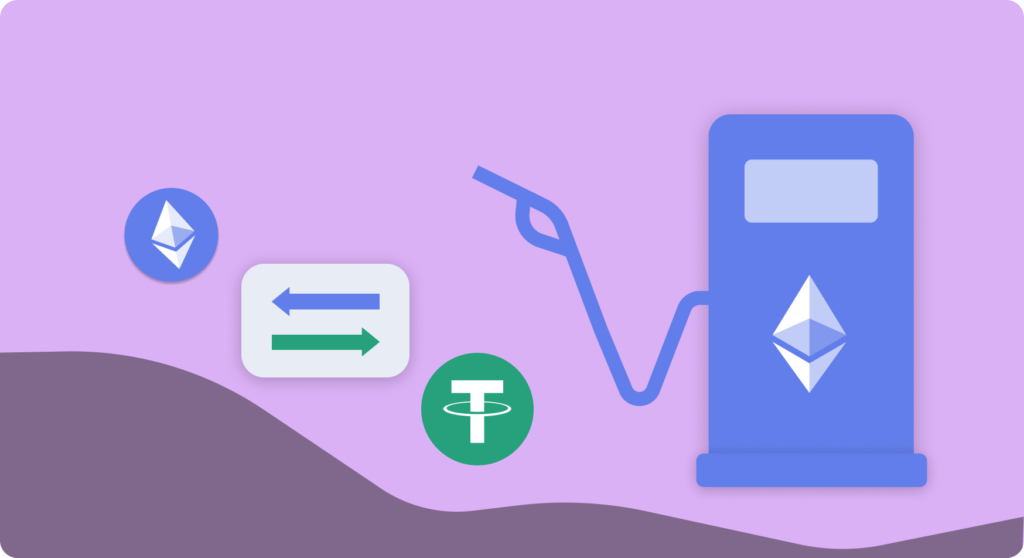Learn How To Effectively Save Money On Gas Fee

Gas fees are a fundamental aspect of the Ethereum network and are crucial in transaction processing and smart contract execution. Understanding what gas fees are, how they work, and how to manage them effectively is essential for anyone interacting with the Ethereum blockchain. This article explains gas fees in Ethereum transactions, their mechanics, and their management strategies.
Definition
Gas fees are payments made by users to compensate miners for the computational work required to process transactions and execute smart contracts on the Ethereum network. These fees are paid in Ether (ETH), the native cryptocurrency of the Ethereum blockchain.
Purpose
- Transaction Processing: Gas fees incentivize miners to include transactions in the next block, ensuring the network’s security and efficiency.
- Preventing Spam: By requiring a fee for each transaction, gas fees help prevent spam and abuse of the network.
How does it work?
Gas Units
Gas units measure the computational effort required to execute operations on the Ethereum network. Each operation, whether a simple transaction or a complex smart contract, requires a certain number of gas units.
Gas Price
The gas price is the amount of ETH a user is willing to pay per gas unit. It is usually measured in Gwei (1 Gwei = 0.000000001 ETH). The gas price determines the priority of the transaction; higher gas prices incentivize miners to include the transaction in the next block.
Gas Limit
The gas limit is the maximum amount of gas a user is willing to spend on a transaction. It ensures that users do not overspend on complex transactions. For simple ETH transfers, the gas limit is typically set at 21,000 units.
Mechanics of Gas Fees
Estimating Gas Fees
Before submitting a transaction, users need to estimate the appropriate gas limit and gas price. Wallets and dApps (decentralized applications) often provide estimated gas fees based on current network conditions.
Gas Fee Markets
Gas fees fluctuate based on network demand. During periods of high demand, such as during popular dApp launches or market volatility, gas fees can increase significantly. Conversely, during low demand, gas fees are generally lower.
EIP-1559 and Fee Structure
Ethereum’s London upgrade, implemented in August 2021, introduced EIP-1559, which changed the gas fee structure. EIP-1559 introduced a base fee and a priority fee (tip):
- Base Fee
- A mandatory fee is burned (removed from circulation) for each transaction, determined by the network and adjusted dynamically based on demand.
- Priority Fee (Tip)
- An optional fee is paid to miners to incentivize them to include the transaction in the next block.
The total fee a user pays is the sum of the base fee and the priority fee.
Managing Gas Fees
Monitoring Gas Prices
Monitoring gas prices can help users decide the optimal time to execute transactions. Websites like ETH Gas Station and Gas Now provide real-time data on gas prices, allowing users to choose lower gas prices during off-peak times.
Setting Gas Limits and Prices
Users can manually set the gas limit and gas price for their transactions:
- Gas Limit
- Ensures the gas limit is sufficient to cover the transaction’s computational requirements. For standard ETH transfers, 21,000 units is typical.
- Gas Price Set a competitive gas price to ensure timely transaction processing. Wallets often suggest gas prices based on current network conditions.
Using Gas Tokens
Gas tokens like Chi Gastoken and GasToken.io can help reduce gas costs. These tokens are minted when gas prices are low and burned to reduce the effective gas price when executing transactions.
Layer 2 Solutions
Layer 2 solutions, such as Optimistic Rollups and zk-Rollups, offer lower gas fees by processing transactions off-chain while maintaining the security of the Ethereum mainnet. Examples include Optimism, Arbitrum, and zkSync.
Key Takeaways
Use Gas Fee Estimation Tools
Before sending a transaction, use tools like ETH Gas Station, Gas Now, or the built-in estimators in wallets like MetaMask to gauge current gas prices and set your transaction parameters accordingly.
Schedule Transactions During Low Demand
Plan your transactions during periods of lower network activity to benefit from lower gas prices. Typically, weekends and non-peak hours tend to have lower network congestion.
Adjust Gas Prices and Limit Manually
If you are comfortable with manual adjustments, set your gas price slightly above the current average to ensure timely processing without overpaying. Ensure the gas limit is sufficient for the transaction type.
Batch Transactions
If possible, batch multiple actions into a single transaction to save on gas fees. Some dApps and wallets offer batching functionalities.
Explore Alternative Networks
Consider using alternative networks that are compatible with Ethereum, such as Binance Smart Chain (BSC) or Polygon (MATIC), which often have lower transaction fees.
Summary
Gas fees are a crucial component of the Ethereum network, incentivizing miners to process transactions and ensuring the network’s security and efficiency. Understanding how gas fees work and how to manage them can help users optimize their transaction costs and avoid unnecessary expenses. By monitoring gas prices, adjusting gas limits and prices, using gas tokens, and exploring Layer 2 solutions, users can navigate the complexities of Ethereum’s gas fee structure more effectively. As Ethereum continues to evolve with future upgrades, the gas fees will likely improve, making transactions more affordable and efficient. Visit Cornerswap.io to buy your favorite crypto at low fees.
